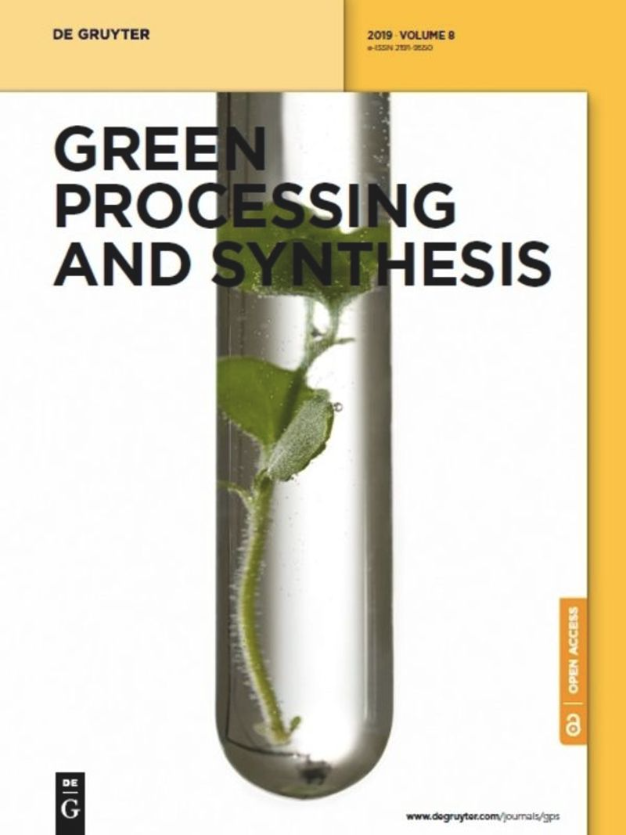Study on the photoelectrocatalytic activity of reduced TiO2 nanotube films for removal of methyl orange
IF 3
4区 工程技术
Q2 CHEMISTRY, MULTIDISCIPLINARY
引用次数: 1
Abstract
Abstract The reduced TiO2 film on which a photoelectrocatalytic (PEC) process had occurred was created from TiO2 nanotube film electrodes by the electrochemical reduction method. The obtained samples’ structure and morphology were characterized using UV-Vis diffuse reflectance spectroscopy, scanning electron microscopy, high-resolution transmission electron microscopy, photoluminescence, and X-ray diffraction. Cyclic voltammetry, linear sweep voltammetry, electrochemical impedance spectroscopy, chronoamperometry, UV-Vis absorbance spectroscopy, and Mott–Schottky plots were employed to examine the electrochemical and photoelectrochemical activities of the prepared electrodes. The results showed that the optimal conditions of cathodic polarization were a potential of −1.4 V for 60 min. The reduced TiO2 nanotube film electrode had better photoelectrochemical activities than pristine TiO2 under UV light due to the higher photocurrent density (13.7 mA‧cm−2) at 1.5 V (vs Ag/AgCl, sat. KCl reference electrode) compared to pristine TiO2 achieving 7.3 mA‧cm−2, indicating more effective charge separation and transport. The degradation of methyl orange (MO) on pristine TiO2 and reduced TiO2 electrodes was carried out in electrocatalytic (EC) and PEC conditions. The PEC process on the reduced TiO2 electrode had the highest MO processing efficiency (98.4%), and the EC process for MO removal on reduced TiO2 had higher efficiency (95.1%) than the PEC process on pristine TiO2 (89.2%).还原TiO2纳米管膜对甲基橙去除的光电催化活性研究
摘要采用电化学还原方法,由TiO2纳米管膜电极制备了发生光电催化(PEC)过程的还原TiO2膜。使用UV-Vis漫反射光谱、扫描电子显微镜、高分辨率透射电子显微镜、光致发光和X射线衍射对所获得的样品的结构和形态进行了表征。使用循环伏安法、线性扫描伏安法、电化学阻抗谱、计时电流法、UV-Vis吸收谱和Mott–Schottky图来检查所制备的电极的电化学和光电化学活性。结果表明,阴极极化的最佳条件是电位为-1.4 V表示60 min。由于光电流密度更高,还原的TiO2纳米管膜电极在紫外光下比原始TiO2具有更好的光电化学活性(13.7 mA·cm−2) V(相对于Ag/AgCl,饱和KCl参比电极)与原始TiO2相比达到7.3 mA‧cm−2,显示更有效的电荷分离和传输。在电催化(EC)和PEC条件下,在原始TiO2和还原的TiO2电极上降解甲基橙(MO)。在还原TiO2电极上的PEC工艺具有最高的MO处理效率(98.4%),并且在还原TiO2上的EC工艺去除MO的效率(95.1%)高于在原始TiO2上的PEC工艺(89.2%)。
本文章由计算机程序翻译,如有差异,请以英文原文为准。
求助全文
约1分钟内获得全文
求助全文
来源期刊

Green Processing and Synthesis
CHEMISTRY, MULTIDISCIPLINARY-ENGINEERING, CHEMICAL
CiteScore
6.70
自引率
9.30%
发文量
78
审稿时长
7 weeks
期刊介绍:
Green Processing and Synthesis is a bimonthly, peer-reviewed journal that provides up-to-date research both on fundamental as well as applied aspects of innovative green process development and chemical synthesis, giving an appropriate share to industrial views. The contributions are cutting edge, high-impact, authoritative, and provide both pros and cons of potential technologies. Green Processing and Synthesis provides a platform for scientists and engineers, especially chemists and chemical engineers, but is also open for interdisciplinary research from other areas such as physics, materials science, or catalysis.
 求助内容:
求助内容: 应助结果提醒方式:
应助结果提醒方式:


